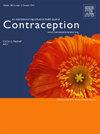美国堕胎禁令和孕产妇及妊娠相关死亡:影响和数据问题
IF 2.3
2区 医学
Q1 OBSTETRICS & GYNECOLOGY
引用次数: 0
摘要
本研究的目的是估计美国堕胎禁令对孕产妇和妊娠相关死亡率的影响,并调查数据质量问题。方法本研究采用每两年一次(如1月至6月)的15-44岁女性孕产妇和妊娠相关死亡统计数据,这些数据来自美国国家卫生统计中心(National Center for Health Statistics)编制的2012年至2023年全美50个州和哥伦比亚特区的限制性死亡证明数据。结果包括孕产妇和与妊娠有关的死亡率,以每10万活产的死亡人数计算。我们使用ICD-10代码确定孕产妇死亡,并通过死亡证明上的妊娠复选框确定与妊娠相关的死亡。分析使用贝叶斯面板数据方法对14个实施完全或6周堕胎禁令的州的孕产妇和妊娠相关死亡率进行反事实预测。结果特定于状态的模型诊断表明潜在的数据质量问题。这些担忧在阿拉巴马州的孕产妇死亡率数据中最为明显,而在乔治亚州则不那么明显。模式估计表明,与怀孕有关的死亡率大大增加,高于没有这些禁令时的预期;我们没有发现相应的可检测到的产妇死亡率增加。按种族和族裔评估死亡率趋势表明,妊娠相关死亡率的增加主要集中在非西班牙裔黑人中。结论:本研究的结果表明,堕胎禁令可能会增加妊娠相关死亡率,尽管数据质量问题和这种罕见结果的随机变异限制了这一发现的确定性。本文章由计算机程序翻译,如有差异,请以英文原文为准。
US ABORTION BANS AND MATERNAL AND PREGNANCY-ASSOCIATED DEATH: IMPACTS AND DATA ISSUES
Objectives
The objective of this study is to estimate the impact of US abortion bans on maternal and pregnancy-associated mortality and investigate data quality issues.
Methods
This study used biannual (eg, January-June) counts of maternal and pregnancy-associated deaths among females aged 15-44 from restricted death certificate data compiled by the National Center for Health Statistics for all 50 states and the District of Columbia for 2012 through 2023. The outcomes include maternal and pregnancy-associated mortality rates, calculated as the number of deaths per 100,000 live births. We identified maternal deaths using ICD-10 codes and pregnancy-associated deaths via the pregnancy checkbox on the death certificate. Analyses used a Bayesian panel data approach to model counterfactual predictions of maternal and pregnancy-associated mortality rates in the 14 states that imposed a complete or six-week abortion ban.
Results
State-specific model diagnostics indicate potential data quality concerns. These concerns are most apparent for maternal mortality data in Alabama, and less so in Georgia. Model estimates suggest a significant increase in the pregnancy-associated mortality rate above what would have been expected in the absence of these bans; we found no corresponding detectable increase in maternal mortality. Assessing mortality trends by race and ethnicity imply the increase in pregnancy-associated mortality is concentrated among non-Hispanic Black individuals.
Conclusions
Results from this study suggest that abortion bans may increase pregnancy-associated mortality, though data quality concerns and stochastic variation in this rare outcome limit the certainty of this finding.
求助全文
通过发布文献求助,成功后即可免费获取论文全文。
去求助
来源期刊

Contraception
医学-妇产科学
CiteScore
4.70
自引率
17.20%
发文量
211
审稿时长
69 days
期刊介绍:
Contraception has an open access mirror journal Contraception: X, sharing the same aims and scope, editorial team, submission system and rigorous peer review.
The journal Contraception wishes to advance reproductive health through the rapid publication of the best and most interesting new scholarship regarding contraception and related fields such as abortion. The journal welcomes manuscripts from investigators working in the laboratory, clinical and social sciences, as well as public health and health professions education.
 求助内容:
求助内容: 应助结果提醒方式:
应助结果提醒方式:


